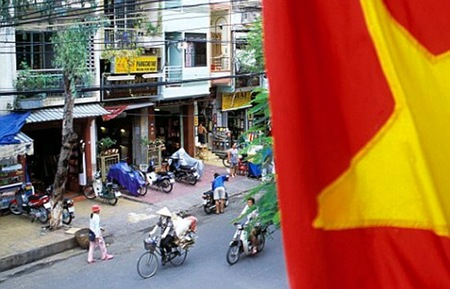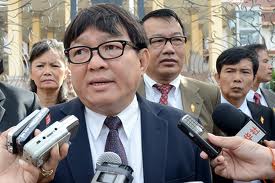Cambodia's riel stabilises against dollar
Cambodia's riel stabilises against dollar
The stabilisation of the riel over the first half of this year is a reflection of increased confidence in using riel in the economy as well as improvements in the agricultural sector, according to economists and the National Bank of Cambodia (NBC).

The slowdown in the US economy has led to the depreciation of the dollar against other currencies, which has also been a contributor to the appreciation of the riel this year.
The global economy is expecting to grow by 3.5 per cent this year, down from 3.9 per cent last year.
The European economy is projected to contract compared to non-EU states, while the US’s economy is expected to grow by 2.1 per cent.
At the same time, Cambodia’s projected growth is about seven per cent this year and the inflation rate stands around five per cent.
According to daily data from the Ministry of Commerce, the riel appreciated 0.36 per cent as of the end of June to 4,112 riel against the greenback, compared to last June’s value of 4,127.
NBC governor Chea Chanto said during the first semester meeting that the government was trying to stabilise the exchange rate between the riel and the dollar in order to maintain stable consumer prices.
The riel’s stabilisation reflected its increasing use in the economy and the public’s confidence, Khin Pisey, senior researcher for the Economic Institute of Cambodia, said.
“This proved that circulation of the riel increased throughout the economy and its growth rate is also much more than previously. However, at the same time, the circulation of American dollars increased significantly – I mean it was running along together with the riel, because our economy is expanding,” Pisey said.
“The main factor fomenting the increasing in use of the riel is the improvements in the agricultural sector. Our farmers buy in and out with riel.”
Pisey added that the establishment of the Cambodia Securities Exchange also played a part in promoting use of the local currency.
“At 0.3 per cent appreciation, the riel is very stable. I suppose this is because of the central bank making a huge effort to stabilise the exchange rate between the dollar and the riel,” Hiroshi Suzuki, chief economist for the Business Research Institute for Cambodia (BRIC) said.
“Of course, Cambodia’s economy is highly dollarised, so the stabilisation of the exchange rate is indispensable to promoting the use of the local currency. So the exchange rate has been very stable – this could prove to be a good reason for using the riel,” he added.
However, if the riel were to depreciate against the dollar, the price of imports would increase, Suzuki said. “Stabilising the exchange rate is very important in stabilising the consumer price index as well.”
The majority of Cambodians predominantly use riel, but the NBC’s statistics show that more than 90 per cent of transactions in Cambodia are conducted in dollars.
An NBC survey showed the riel was the currency of choice for most people, but experts said the dollar was the main currency for conducting business in Cambodia.
According to the NBC’s survey, conducted in 2010, 37 per cent of Cambodians received their income in riel, 27.5 per cent in dollars and 33 per cent in both or multiple currencies. About 2.2 per cent of Cambodians used Thai baht, while a further 0.3 per cent used the Vietnamese dong.
The survey also revealed that the currency of choice varied depending on location. About 70 per cent of Phnom Penh respondents operated solely in dollars, but only six per cent of respondents from Battambang did likewise.
Hiroshi Suzuki said the Cambodian government was trying to promote the use of the riel, but the government would like to do it over the longer term.
“If we would like to make use of the riel more in the short term, it will create a very big shock to the economy. So to be stable and steady during this phase is very important.
“I have no idea how much to use the riel in the short term. Of course, we have many methods for its increased use in the long term,” he said.
phnom penh post

















